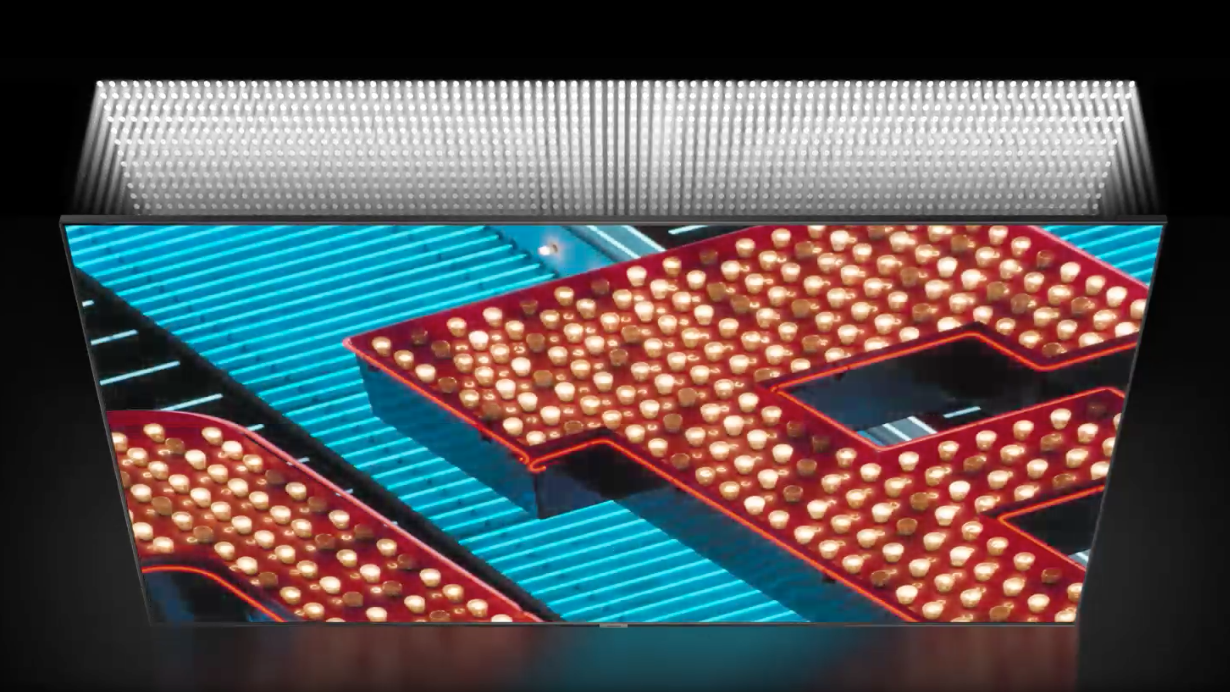Samsung's first hybrid OLED TVs might finally make small TVs more cinematic
Mixing QLED tech with OLED, Samsung's QD-OLED TVs might bring cinematic image quality to small TVs at last


There's a whole new type of TV technology set to debut soon: we're expecting Samsung's QLED/OLED hybrid TV panel to appear in January at CES 2022. And not just for the tech (known as QD-OLED) to be shown off – the rumours say that we'll see 55-inch and 65-inch TVs that will be available to buy next year.
Most new TV technologies tend to arrive at that kind of size, but a report from Edaily Korea (via FlatPanelsHD) says that it won't only be big-screens that benefit from QD-OLED: there will also be a 34-inch panel.
I really hope this is for a small TV to make use of the technology, because that would be so exciting. Smaller TVs tend to miss out on the latest and greatest TV panel wizardly, but there are plenty of people who love movies but only have space for a set that small. Even the best 32-inch TVs – including Samsung's own Frame TV, which at least includes QLED tech – don't have the kind of HDR nuance to images that larger sets include as standard.
However, it's also possible that the 34-inch screen will be aimed at using QD-OLED in a premium computer monitor instead. This may be the more likely route that Samsung is taking, because a 34-inch monitor with this tech could carry a premium price, whereas a 34-inch TV probably wouldn't carry as high a price… and companies generally like to charge a premium for anything new.
But I refuse to give up hope, especially since, as mentioned above, Samsung is one of the few companies already putting some of its higher-end tech into a smaller TV.
Why should I care about QD-OLED?
QD-OLED is one of the great hopes of the TV industry, because it combines the per-pixel precision contrast of OLED with the bright, bold colours that QLED TVs are famous for.
The way QD-OLED sets will work is there will be a 4K OLED panel consisting of a single colour (blue) of pixels. In front of that panel will be a Quantum Dot layer, which will turn the blue to green or red as needed. Combining these colours will make all the other colours needed.
Get all the latest news, reviews, deals and buying guides on gorgeous tech, home and active products from the T3 experts
The advantage over QLED TVs is that each individual pixel in the OLED panel can control its own brightness, including dimming right down to black, meaning you get true black levels and detail in dark tones – and those dark pixels can be right next to bright white ones, with no light spilling between then (known as 'blooming'), which is a problem for LCD TVs, including QLED models.
The advantage over OLED TVs is that Quantum Dots are a very energy efficient way to filter colours, and will hopefully mean that QD-OLED TVs can hit higher brightness levels than current OLED TVs. And these single-colour OLED panels should be cheaper to produce than more complex OLED types, so you might get all the advantages without the cost.
Will QD-OLED start to dominate our list of the best TVs when it comes to bang for back? Will the rapidly dropping prices of the best OLED TVs be able to fend it off? 2022 is set to be a fascinating time in the TV world!

Matt is T3's former AV and Smart Home Editor (UK), master of all things audiovisual, overseeing our TV, speakers and headphones coverage. He also covered smart home products and large appliances, as well as our toys and games articles. He's can explain both what Dolby Vision IQ is and why the Lego you're building doesn't fit together the way the instructions say, so is truly invaluable. Matt has worked for tech publications for over 10 years, in print and online, including running T3's print magazine and launching its most recent redesign. He's also contributed to a huge number of tech and gaming titles over the years. Say hello if you see him roaming the halls at CES, IFA or Toy Fair. Matt now works for our sister title TechRadar.